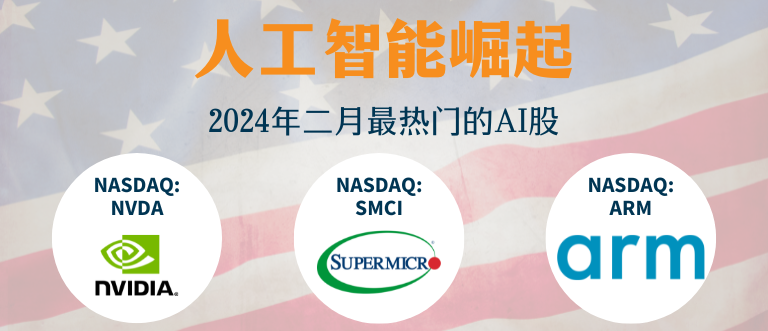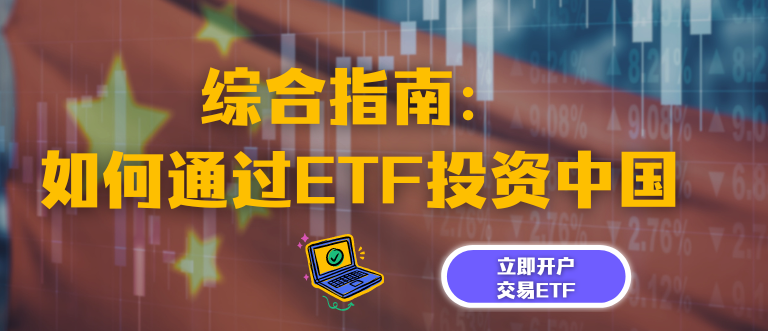Clean price
Table of Contents
Clean price
A critical factor that investors must consider while choosing their investment is the bond’s pricing. It stands for the price at which the bond is purchased or sold. However, figuring out this price is more complicated. Several variables determine the cost of bonds. One of these consists of interest rates, payments, and accumulated interest.
Companies may encounter varying costs while buying bonds. Each might stand in for different facets of the bond and its value. The prices for clean and unclean are two of these. The cost of a coupon bond that does not include the interest accumulated between coupon payment dates is called the “clean price.”
What is the clean price?
The price of a bond that does not include any accumulated interest is the clean price. Coupons, which are fixed-interest payments, are frequently given to bond investors. Payments for vouchers are made regularly.
Although some bonds offer annual, quarterly, or even monthly costs, they are most commonly made twice a year. A bond’s advertised price is known as the clean price. It varies in response to changes in monetary policy, interest rates, and even the issuer’s creditworthiness.
Understanding clean price
Bond prices can be either clean price or filthy price when being quoted. The term “dirty” describes the cost of a bond that takes accumulated interest depending on the coupon rate into account. When a bond quotes between coupon payment periods, the price includes the goods accrued up to that point.
A clean bond price excludes accumulated interest, but a dirty bond price is all-inclusive it. While the dirty price is more frequently given in Europe, the clean price is more commonly quoted in the United States. Bond coupons, or interest payments, are typically made twice a year, although depending on the issuer, some bonds may pay a coupon every year, every three months, or even every day.
Formula of clean price
The clean price formula is as follows: clean price = dirty price – accrued interest.

Calculating clean price
The following elaborates on the calculation of the clean price of a bond. The 2023 maturity date of the government bond Yoko purchased has a 5% coupon rate. The semi-annual payments for the bond are due on December 1 and June 1 of each year. Yoko purchased it in January 2021 for 1,800 US$.
The advertised price of a bond is often the clean price; there is no specific need to compute it. However, a bond issuer might provide an investor with a misleading price. Therefore, we must calculate the accrued interest to establish whether or not the given price is filthy.
From the final payment date to the date of purchase, interest has accrued. Yoko purchased the bond on January 1, 2022. As a result, from December 1, 2020, to January 1, 2021, interest was accumulated.
Accrued interest = F x C/M x D/T = 1800 x 0.05/2 x 31/182.5 = 1800 x 0.025 x 0.169 = US$7.60
Now, applying the dirty price formula:
Dirty price = clean price + accrued interest = 1800 + 7.60 = US$1807.60
As a result, the bond’s dirty price was US$1807.60 US on January 1, 2022. This demonstrates that Yoko got a straight quote from the broker. A clean quote can also be obtained by deducting accumulated interest from the filthy price.
Clean quote = Dirty price – accrued interest = 1807.60 – 7.60 = 1800 US$
Investors receive a precise price from a broker. But it’s crucial to remember that investors still have to pay the price. As a result, Yoko pays US$7.60 more than the clean quote, which benefits the bond issuer.
Examples of clean rice
The following elaborates on an example of the clean price of a bond. Bonds from XYZ Ltd. have a face value of US$1,000 and a publicised price of US$980. They have a five-year maturity date and a 5% coupon rate paid semi-annually.
A 5% US$1000(or US$50) annual coupon payment is required. Up to maturity, the investor will get a US$25 coupon payment every six months. The clean price of the bond in this instance is US$980. Investors are given a price quote for the bond of US$980 plus interest.
Brokers cite the filthy price, calculated by multiplying the clean price by the accumulated interest since that day. The dirty price for a bond whose last coupon payment was made on June 1 is calculated as clean price + accrued interest, where accrued interest is the interest earned on the bond from June 1 to August 31 based on its coupon rate. The price constantly fluctuates based on how long it has been since the bond’s last coupon payment.
Frequently Asked Questions
Brokers and investors frequently exchange dirty prices, but the clean price or the price before interest has been charged, is typically considered the advertised price. Although accumulated interest is included in the dirty price, the clean price is frequently thought of as the bond’s worth in the current market.
The clean price is frequently used by individual investors as a benchmark when contrasting various bonds. Changes in accumulated interest do not influence changes in yield for dirty prices, making it a superior comparison object. The filthy price is employed to determine the expected return from purchasing or selling a specific bond.
The clean price of a bond is its face value less the most recent coupon payment and any interest that has accumulated since the bond’s issue.
The clean price is the discounted future cash flow of a bond’s current value, with fewer interest payments.
The dirty price always remains at or above the clean price as interest is added to the market price.
Related Terms
- Notional amount
- Negative convexity
- Jumbo pools
- Inverse floater
- Forward Swap
- Underwriting risk
- Reinvestment risk
- Final Maturity Date
- Bullet Bonds
- Constant prepayment rate
- Covenants
- Companion tranche
- Savings bond calculator
- Variable-Interest Bonds
- Warrant Bonds
- Notional amount
- Negative convexity
- Jumbo pools
- Inverse floater
- Forward Swap
- Underwriting risk
- Reinvestment risk
- Final Maturity Date
- Bullet Bonds
- Constant prepayment rate
- Covenants
- Companion tranche
- Savings bond calculator
- Variable-Interest Bonds
- Warrant Bonds
- Eurobonds
- Emerging Market Bonds
- Serial bonds
- Equivalent Taxable Yield
- Equivalent Bond Yield
- Performance bond
- Death-Backed Bonds
- Joint bond
- Obligation bond
- Bond year
- Overhanging bonds
- Bond swap
- Concession bonds
- Adjustable-rate mortgage
- Bondholder
- Yen bond
- Liberty bonds
- Premium bond
- Gold bond
- Reset bonds
- Refunded bond
- Additional bonds test
- Corporate bonds
- Coupon payments
- Authority bond
- Secured bonds
- Revenue bonds
- Perpetual bonds
- Municipal bonds
- Quote-Driven Market
- Debenture
- Fixed-rate bond
- Zero-coupon bond
- Convexity
- Compounding
- Parallel bonds
- Junk bonds
- Green bonds
- Average maturity
- Investment grade bonds
- Convertible Bonds
Most Popular Terms
Other Terms
- Options expiry
- Adjusted distributed income
- International securities exchanges
- Settlement currency
- Federal funds rate
- Active Tranche
- Convertible Securities
- Synthetic ETF
- Physical ETF
- Initial Public Offering
- Buyback
- Secondary Sharing
- Bookrunner
- Payment Date
- Secondary Market
- Margin Requirement
- Mark-to-market
- Pledged Asset
- Yield Pickup
- Subordinated Debt
- Trailing Stops
- Treasury Stock Method
- Stochastic Oscillator
- Basket Trade
- Contrarian Strategy
- Exchange Control
- Notional Value
- Relevant Cost
- Dow Theory
- Speculation
- Stub
- Trading Volume
- Going Long
- Pink sheet stocks
- Rand cost averaging
- Sustainable investment
- Stop-limit sell order
- Economic Bubble
- Ask Price
- Stock symbol
- Synthetic replication
- Bourse
- Beneficiary
- Witching Hour
- Widow and Orphan stock
- Public Float
- Closing Price
- Reverse stock splits
- Quiet period
- Prepayment risk
Know More about
Tools/Educational Resources
Markets Offered by POEMS
Read the Latest Market Journal

本文旨在为中级外汇交易者提供必要的信息和知识。它将涵盖我们上一篇文章 “五分钟看懂世界上最活跃的市场-外汇差价合约(FX CFD)...

解锁台湾股市的投资潜力!深入了解由强大的技术驱动型经济推动的股票市场,2023 年机械和电气设备将占出口的 69%。在政治稳定、投资者友好的法规和健全的法律框架下,探索台积电和富士康等全球顶级企业。台湾股市值得称赞的历史表现和在国际贸易中的的重要性使其更具吸引力。在这个科技实力雄厚、经济稳定、充满活力的股票市场中,抓住增长机遇!

了解外汇市场 外汇交易市场又称外汇市场,是一个买卖货币的全球性金融市场。它是全世界规模最大、流动性最强的金融市场,每日交易量超过 6 万亿美元。但外汇市场有一个重要却常被忽视的一点,就是它受交易心理的影响。在本文中,我们将探讨外汇市场的复杂性,还有把重点放在交易心理与传统交易策略共同发挥的关键作用...

五分钟看懂世界上最活跃的市场 -外汇差价合约(FX CFD)
外汇交易市场俗称外汇或外汇市场,是全球金融市场的支柱。它是世界上最活跃的市场,2022 年 4 月,全球交易额达到创纪录的每天 7.5 万亿美元[1] 。这个活跃的市场为交易者提供了利用货币价格波动赚取利润的机会。在本文中,我们将解释外汇市场的基本原理,助您了解其投资机制。 什么是外汇? 外汇市场是一个分散的全球市场,世界上所有货币都在这里进行交易...

随着通胀数据趋向 2% 的理想目标,人们普遍乐观地认为,在任何可能的降息之前,市场都不会受到不利影响。以下是美股市场2024年的一些重要事件,投资者在做出投资决策时可以参考留意。

根据《东南亚态势报告:2023》,失业和经济衰退是当前东南亚面临的主要挑战。各国采取了各种政策和措施以恢复经济,尽力摆脱新冠疫情的影响。尽管如此,越南在经济和社会方面展现出了令人满意的复苏迹象,经济增长逐季上升,成为世界经济的亮点之一。虽然全年GDP增速放缓至5.05%,低于政府6.5%的目标,但越南仍然是地区和世界经济增速较快的国家之一。






















